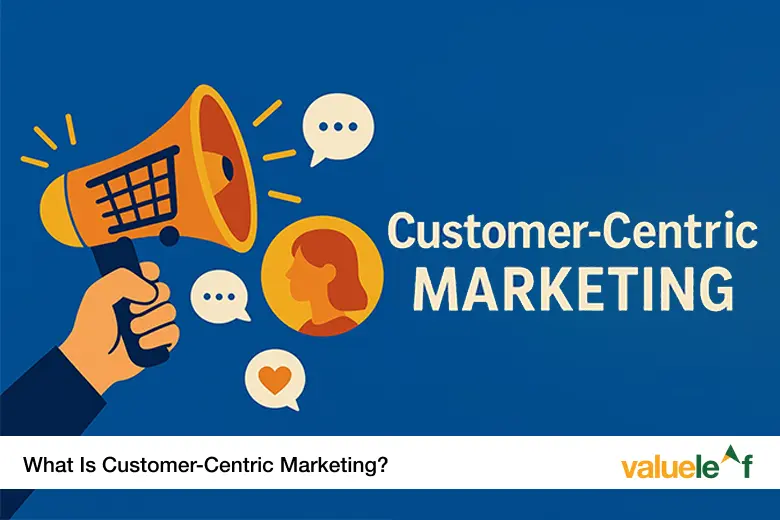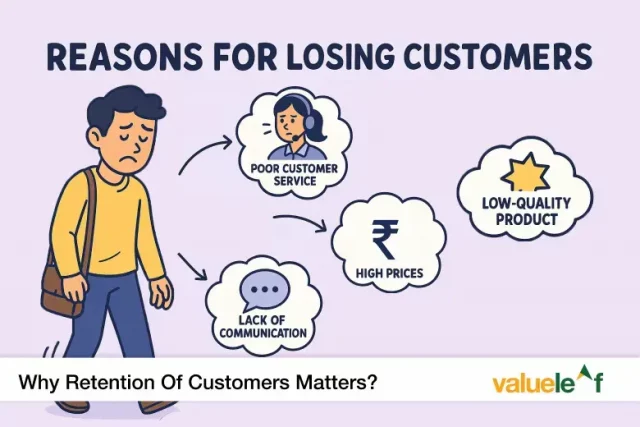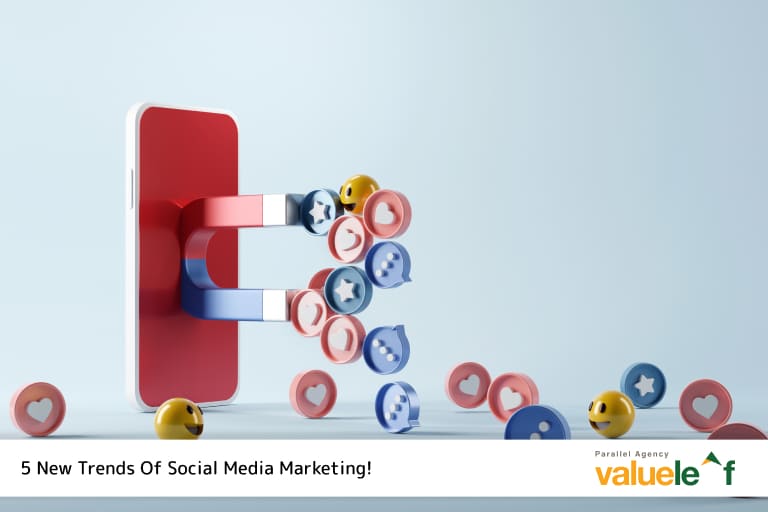What Is Customer-Centric Marketing?
Customer-centric marketing is a strategic approach that places the customer at the core of every business decision, from product development to post-sale support. Unlike product-centric models that focus on features and pricing, this model zooms in on customer needs, desires, and behaviors. Simply put, you’re not just selling to people—you’re solving for them.
A solid customer-centric marketing strategy doesn’t just help you sell more. It helps you sell smarter, with relevance, empathy, and trust.
Understanding the Consumer-Centric Approach
The consumer-centric approach involves an emotional and behavioral shift from short-term sales to long-term relationships. It’s not about “what can we push today?” but “how can we add value throughout the customer journey?” This shift boosts retention and nurtures brand advocates—customers who love you enough to promote you.
Think of it like dating: if all you do is talk about yourself, the relationship won’t last.
Why a Customer-Oriented Marketing Concept Matters Today
We’re living in an era where choice is infinite, but attention is scarce. Consumers don’t want to be marketed at; they want to be engaged with. A customer-oriented marketing concept helps businesses pivot from shouting into the void to having meaningful, data-driven conversations with their audiences.
Personalization, transparency, and fast response times are no longer “nice-to-have”—they’re expected.
Customer Centricity Marketing vs. Product-Centric Models
Let’s be honest: product-centric marketing had its glory days. But in today’s world, nobody wants to be sold a drill—they want a hole in the wall.
Customer-centric marketing flips the script. It doesn’t lead with the product; it leads with the problem. It listens before it speaks. It serves before it sells.
| Product-Centric | Customer-Centric |
| Features first | Needs first |
| Transaction-based | Relationship-focused |
| Mass marketing | Personalized messaging |
| One-size-fits-all | Segmented, data-driven |
Client Centric Marketing in Action
In B2B, client-centricity may mean white-glove onboarding, proactive account management, and quarterly business reviews. In B2C, it looks like hyper-targeted emails, loyalty perks, and responsive support.
Example: Salesforce succeeds not just by offering CRM software, but by customizing success paths for each client. They don’t just sell tech—they sell outcomes.
The Anatomy of a Customer-Centric Marketing Strategy
A great customer-centric strategy isn’t just a to-do list—it’s a company-wide mindset. Here’s what it includes:
- Customer Journey Mapping: Visualize every stage of the customer experience to find pain points and create smoother, more valuable interactions.
- CRM Integration: Centralize customer data across sales, support, and marketing to enable personalized, consistent communication at every touchpoint.
- Segmentation & Personalization: Group customers by behavior or needs, then tailor content that speaks directly to each segment. Relevance = results.
- Real-Time Data Collection: Track customer actions as they happen. Use this live data to tweak campaigns and respond instantly to customer behavior.
- Feedback Loops: Collect input through surveys, reviews, and social media. More importantly, act on it. Let your customers help shape your strategy.
Customer-Centric Marketing Best Practices Across Key Channels
To succeed in today’s competitive landscape, businesses must align every channel and internal process with what customers actually want: value, relevance, and respect. Below are key practices that turn good marketing into truly customer-centric marketing.
- Email Marketing:
Email is still one of the most powerful tools in your marketing arsenal—but only when used with empathy and intent. Segment your audience based on behavior, preferences, and life stage, then deliver timely, relevant messages that solve problems, answer questions, or offer real value. - SEO: Search engines have evolved—and so should your content strategy. Today’s SEO success comes from understanding what your audience wants to know rather than just stuffing pages with keywords. Focus on answering real questions, creating comprehensive content hubs, and using structured data (schema) to enhance search visibility.
- Content Marketing: Great content isn’t just informative—it’s human. By weaving storytelling into your messaging, you create emotional connections that build trust and credibility. Whether it’s a blog, video, or social post, your content should make readers feel seen, heard, and motivated to act.
- Metrics That Actually Matter: Vanity metrics like clicks and impressions only tell part of the story. To measure the true impact of customer-centric marketing, focus on KPIs that reflect experience, loyalty, and satisfaction. These metrics give deeper insight into how your brand is perceived—and how well you’re retaining the people who matter most.
Designing a Customer-Centric Marketing Campaign
Here are the essential steps to build a customer-centric campaign—from gathering smart data to measuring what really matters—so you can attract, engage, and retain customers with precision and purpose.
- Start with Data: Every successful customer-centric marketing campaign begins with a foundation of reliable data. Understanding your audience starts with collecting insights from multiple sources—analytics tools, customer surveys, feedback forms, sales data, and social media interactions.
Pro tip: Prioritize first-party data. With the phasing out of third-party cookies, owning and protecting your customer data is more valuable than ever.
- Define Personas: Personas give your audience a face, a name, and a story. These fictional profiles represent the different segments of your real customer base and include details like age, goals, pain points, and buying behaviours.
Advanced tip: Update personas regularly. People’s behaviours evolve — your marketing should too.
- Build Messages Around Value: In a marketplace overwhelmed by noise, what cuts through is value—not features. Customers are not buying your product; they’re buying the transformation it brings to their lives.
Tip: A/B test different messages to see which benefits matter most to each segment.
- Select Relevant Channels: Your message can be perfect, but if it’s delivered on the wrong channel, it falls flat. That’s why choosing the right marketing channels is crucial to customer-centric campaigns.
Tip: Conduct Customer Channel Mapping
- Personalize Everything: Personalization is no longer a luxury—it’s an expectation. Customers want to be treated as individuals, not segments. From addressing them by name in emails to recommending products based on previous purchases, personalization deepens emotional connections and improves conversion rates.
Tip: Use Behavioral Triggers for Hyper-Personalization
- Measure What Matters:To optimize your efforts and justify your budget, you must measure the metrics that align with your campaign’s objectives. It’s easy to get distracted by vanity metrics like likes or impressions, but customer-centric marketing demands a focus on deeper indicators.
Tip: Match each campaign goal with specific KPIs that directly measure its success, like engagement for awareness or conversions for lead gen.
How AIDA Fits into Customer-Centric Marketing
AIDA is a powerful framework, but it shifts from brand-push to value-led engagement in a customer-centric world. Here’s how each stage evolves when you put the customer first:
| AIDA Stage | Customer-Centric Interpretation |
| Attention | Capture attention using content that addresses the customer’s actual needs or pain points—not just flashy headlines. |
| Interest | Build interest by offering relevant, helpful, or entertaining information based on their preferences or behavior. |
| Desire | Create desire through personalization, social proof, and empathy—showing that your solution fits their specific situation. |
| Action | Make taking action easy, seamless, and valuable for the customer—on their terms (channel, timing, offer type, etc.). |
Inbound vs. Outbound in Customer-Oriented Campaigns
Here’s a clear and informative comparison table outlining Inbound vs. Outbound in Customer-Oriented Campaigns, including examples and insights on how each aligns with customer-centric strategies:
| Aspect | Inbound Marketing | Outbound Marketing |
| Strategy Type | Pull – Attract customers organically | Push – Reach out directly to potential customers |
| Customer Role | Active seeker of value-based content | Passive recipient of brand messages |
| Channels Used | Blogs, SEO, social media, email newsletters, webinars | Cold emails, TV/radio ads, direct mail, display ads |
| Cost Efficiency | Lower long-term cost; grows over time | Higher cost; requires constant investment |
| Targeting | Based on behavior, interest, and intent | Often based on demographics or broad audience segments |
| Interruption Level | Non-intrusive; users choose to engage | Can be disruptive; often ignored or blocked |
| Value Focus | Solves customer problems through helpful content | Promotes products or services directly |
| Example | A blog post on “Best CRM Tools for Small Business” | A cold call promoting a specific CRM product |
Creating Content That Satisfies Search Intent
Understanding and aligning your content with search intent is the key to attracting and converting the right audience. Here’s how to tailor content to the three main types of search intent:
- Informational – Blog Posts, How-To Guides, Educational Content
Users with informational intent are looking to learn or solve a problem—not buy. For instance, a post like “How to Choose the Right Running Shoes for Flat Feet” targets users in the research phase, builds trust, and gently nudges them toward your product ecosystem. - Navigational – Landing Pages, Company Info, Brand Searches
Navigational intent means users already know about your brand or product and are trying to find a specific page. Your goal here is to ensure that your landing pages, homepage, and branded pages are SEO-optimized, easy to navigate, and clearly structured. Make sure branded keywords (e.g., “Nike Running Shoes”) bring users to the most relevant, value-packed page. - Transactional – Product Pages, Sales Pages, Clear CTAs
Users with transactional intent are ready to act—buy, sign up, or download. This is where optimized product pages, persuasive sales copy, benefit-focused headlines, trust signals (like reviews), and clear calls-to-action (CTAs) make a huge difference. For example, a product page with real user reviews, high-quality images, and a “Buy Now” button satisfies this intent fully and drives conversion.
Sustainability and Inclusivity in Customer-Centric Marketing Campaigns
Today’s customers expect brands to do more than sell—they want them to stand for something. Incorporating sustainability and inclusivity isn’t a trend; it’s a responsibility that drives brand loyalty and trust. Here’s how to integrate both authenticall:
- Use Inclusive Visuals
Diversity should be represented in your visuals—people of all races, genders, ages, body types, and abilities. Inclusive imagery in ads, product showcases, and website visuals signals to customers. - Highlight Ethical Practices
Transparency is key. Whether you use eco-friendly materials, ensure fair labor practices, or minimize carbon emissions, share those details. Use storytelling to communicate your brand’s efforts toward ethical sourcing, supply chain responsibility, and sustainable packaging. - Support Causes Authentically
Championing social causes should be more than a seasonal campaign. Align with organizations and initiatives that reflect your brand’s core values, and demonstrate long-term commitment.
FAQs About Customer Centric Marketing
What is customer-centric marketing?
It’s a strategy that puts the customer at the heart of marketing—focusing on needs, preferences, and personalized experiences to build long-term relationships, not just drive sales.
Why is customer-centric marketing important?
It increases loyalty, boosts engagement, and drives better ROI by making customers feel valued, understood, and served—not just targeted.
How can businesses implement a customer-centric marketing strategy?
Understand your customer journey, use data to personalize, align teams around customer goals, and leverage tools like CRMs and feedback systems to stay relevant.
What are the benefits of customer-centric marketing?
Better retention, stronger loyalty, higher conversions, and smarter spending. Happy customers stay longer and bring others with them.
What challenges might businesses face with customer-centric marketing?
Data silos, resistance to change, outdated tools, and difficulty measuring success are common roadblocks—but all are solvable with the right mindset and tech.
How does customer-centric marketing differ from traditional marketing?
Traditional marketing pushes products; customer-centric marketing solves problems and builds relationships through relevance and value.
What tools can help with customer-centric marketing?
CRM systems, email automation, social listening, analytics, and survey tools help collect insights and deliver personalized experiences at scale.
How can customer feedback improve marketing strategies?
Feedback reveals what’s working, what’s not, and what customers actually want—helping you fine-tune campaigns and build trust faster.




